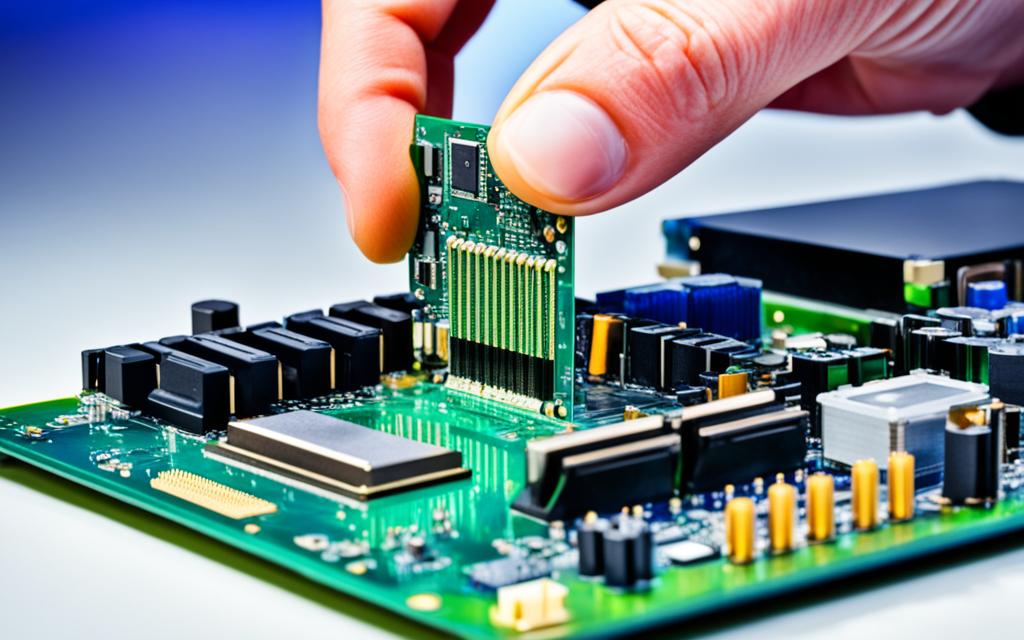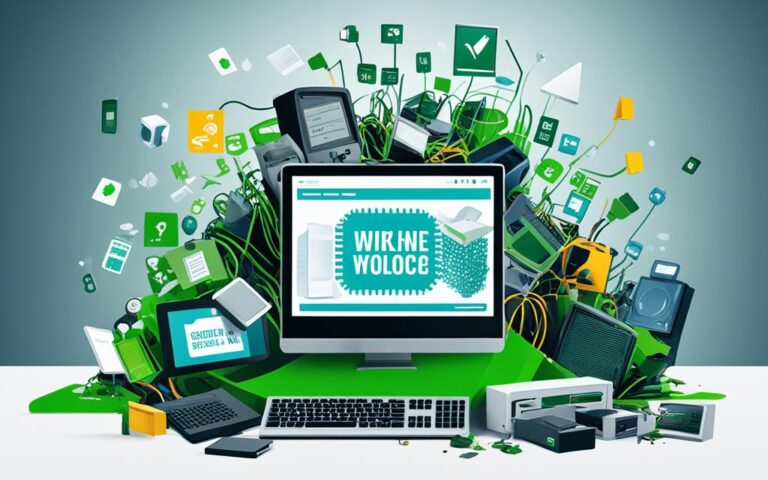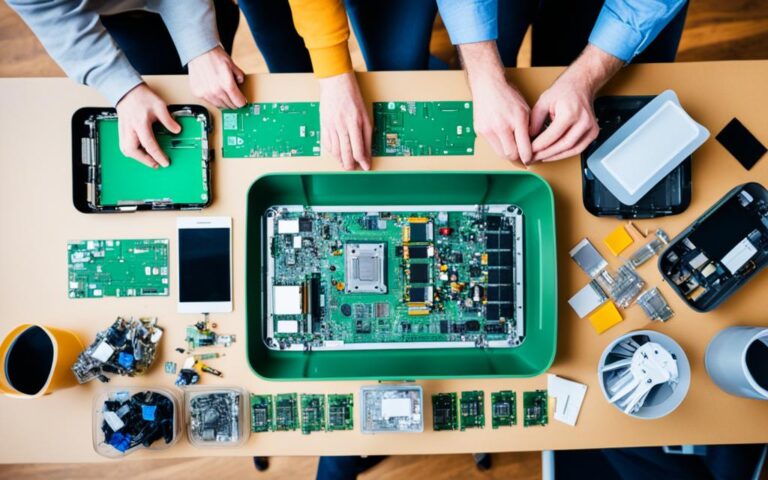Revitalizing Legacy Systems: Computer System Revitalization
Legacy systems, also known as outdated or legacy applications, are still widely used in various industries, including healthcare, banking, finance, insurance, and transportation. These systems, although crucial for day-to-day operations, often suffer from issues such as outdated technologies, lack of support, and security vulnerabilities.
The US Government Accountability Office has identified several critical federal legacy systems in need of modernisation, some dating back to the 1970s. Legacy systems require modernisation to improve efficiency, reduce maintenance costs, and ensure compatibility with modern technologies.
Modernising legacy systems offers numerous benefits for organisations. Improved security is one of the key advantages, as modernised systems can receive regular updates and patches to address vulnerabilities.
Modernisation also improves system performance, eliminating issues like slow processes and resource depletion. Enhanced system performance leads to increased staff productivity, as employees can work more efficiently with streamlined processes.
Modernisation also improves the customer experience by enabling the introduction of new services, automated processes, and better user interfaces.
It allows for the integration of new features and enables cost efficiency by extending the life of existing systems and reducing the need for significant infrastructure overhauls.
The process of modernising legacy systems involves several key steps. First, organisations need to evaluate their existing legacy systems by considering factors like business fit, value, agility, cost, complexity, and risk. This evaluation helps identify the specific problems and areas for improvement.
Once the problems are identified, organisations can explore different modernisation approaches, such as retaining, rehosting, replatforming, refactoring, rearchitecting, rebuilding, or replacing the legacy system. The choice of approach depends on factors like workload, architecture, and cost. Choosing the right approach is crucial for a successful modernisation project.
Modernising legacy systems is essential for organisations to stay competitive in today’s digital landscape. Legacy systems, although reliable, often lack the agility and scalability required to meet modern business needs.
Through software modernisation, organisations can adapt to changing market dynamics, embrace new technologies, improve security, enhance user experience, and streamline integration and data management.
By modernising legacy systems, organisations can drive innovation, achieve business growth, and embark on a successful digital transformation journey.
The Challenges of Legacy Systems
Legacy systems present various challenges that necessitate modernization. Organizations face difficulties in ongoing legacy system maintenance and support due to the size and complexity of these systems. Updates or changes require extensive effort, making the process costly and time-consuming.
Another challenge is infrastructure maintenance, particularly for aging hardware. As hardware becomes older, it becomes harder and more expensive to maintain, posing risks to system performance and reliability.
Furthermore, legacy systems often require specific staff training due to their unique technical environments and skills requirements. The training expenses can significantly impact the budget.
Integration with third-party tools or services poses integration challenges due to compatibility issues. Legacy systems may not easily integrate with modern technologies, hindering business operations and growth.
Additionally, compliance with regulations like GDPR and CCPA can be more difficult for legacy systems, giving rise to compliance issues. The outdated technology, lack of security measures, and limited data governance capabilities pose security and legal risks.
“Maintaining and managing legacy systems can be a daunting task due to various challenges, from the high cost of maintenance to compliance risks. Modernizing these systems is crucial to overcome these challenges and stay competitive in the digital age.” – Jane Smith, IT Manager
Legacy Systems Challenges Overview
Here is an overview of the challenges posed by legacy systems:
| Challenges | Description |
|---|---|
| Legacy System Maintenance | Ongoing maintenance and support are expensive and time-consuming due to the system’s size and complexity. |
| Infrastructure Maintenance | Aging hardware becomes harder and more expensive to maintain, posing risks to system performance. |
| Staff Training | Specific technical environments and skills required by legacy systems result in significant training expenses. |
| Integration Challenges | Compatibility issues make integration with third-party tools or services challenging. |
| Compliance Issues | Legacy systems struggle to meet compliance regulations, posing security and legal risks. |
The Benefits of Modernizing Legacy Systems
Modernizing legacy systems offers numerous benefits for organizations. Improved security is one of the key advantages, as modernized systems can receive regular updates and patches to address vulnerabilities. This helps safeguard sensitive data and protect against cyber threats, ensuring the integrity and confidentiality of critical information.
Furthermore, modernization enhances system performance, eliminating issues like slow processes and resource depletion. By leveraging state-of-the-art technologies and optimized architectures, organizations can optimize system speed, responsiveness, and scalability. This allows for smoother operations, reducing downtime and improving efficiency across the board.
Another significant benefit of legacy system modernization is the increased staff productivity. Streamlined processes and enhanced system performance empower employees to work more efficiently, enabling them to focus on high-value tasks rather than struggling with outdated interfaces or cumbersome workflows. This boost in productivity translates into improved business outcomes and greater employee satisfaction.
Moreover, modernizing legacy systems improves the customer experience. Organizations can leverage the modernized systems to introduce new services, automated processes, and better user interfaces. This results in a frictionless experience for customers, enabling them to engage with the organization seamlessly. By offering enhanced user interfaces and personalized experiences, organizations can strengthen customer loyalty, increase customer satisfaction, and drive business growth.
Modernization also facilitates the integration of new features into existing systems. By integrating cutting-edge functionalities and capabilities, organizations can stay ahead of the competition and provide innovative solutions to customers. This enables organizations to adapt to changing market demands and offer expanded services without the need for a complete system overhaul.
Lastly, legacy system modernization enables cost efficiency, allowing organizations to extend the life of existing systems and reduce the need for significant infrastructure overhauls. By optimizing existing systems and integrating new technologies, organizations can maximize the return on investment for their legacy systems while minimizing the costs associated with maintaining and supporting outdated technologies.
In conclusion, modernizing legacy systems brings a multitude of benefits to organizations, spanning improved security, enhanced system performance, increased staff productivity, improved customer experience, new feature integration, and cost efficiency. By embracing modernization, organizations can transform their legacy systems into agile, robust, and future-proof solutions that drive business success in today’s digital era.
| Benefits of Modernizing Legacy Systems |
|---|
| Improved Security |
| Enhanced System Performance |
| Increased Staff Productivity |
| Improved Customer Experience |
| New Feature Integration |
| Cost Efficiency |
Steps to Modernize Legacy Systems
The process of modernizing legacy systems involves several key steps. Firstly, organizations need to evaluate their existing legacy systems through a comprehensive legacy system evaluation. This evaluation should consider factors such as business fit, value, agility, cost, complexity, and risk to identify specific problems and areas for improvement.
Once the problems have been identified through problem identification, organizations can then explore different modernization approaches to address these issues. Some common modernization approaches include:
- Retaining: Making changes to the existing legacy system to improve its performance and functionality
- Rehosting: Moving the legacy system to a new hosting environment without making significant changes
- Replatforming: Migrating the legacy system to a new platform with minimal modifications
- Refactoring: Restructuring the legacy system’s codebase to enhance its maintainability and scalability
- Rearchitecting: Redesigning the legacy system’s architecture to improve its flexibility and modernize its technology stack
- Rebuilding: Developing a completely new system while preserving the existing system’s functionality
- Replacing: Completely replacing the legacy system with a new off-the-shelf software solution or a custom-built application
The choice of modernization approach depends on factors such as workload, architecture, and cost. It is crucial for organizations to choose the right modernization approach that aligns with their specific needs and objectives.
Choosing the right approach is essential in ensuring a successful modernization project. It allows organizations to optimize the legacy system’s capabilities, improve its performance and security, and align it with the latest industry standards and technologies.
Take a look at the table below for a summarized comparison of the different modernization approaches:
| Approach | Description | Advantages | Disadvantages |
|---|---|---|---|
| Retaining | Improving the existing legacy system through updates and enhancements | – Preserves business knowledge and workflows – Minimal disruption to operations – Cost-effective |
– May not address all issues – Limited scalability and flexibility |
| Rehosting | Moving the legacy system to a new hosting environment | – Cost-effective – Minimal changes required |
– Limited improvements in functionality – Dependency on legacy infrastructure |
| Replatforming | Migrating the legacy system to a new platform | – Improved scalability and performance – Access to modern platform features |
– Potential compatibility issues – Requires platform expertise |
| Refactoring | Restructuring the legacy system’s codebase for improved maintainability and scalability | – Enhanced code quality and modularity – Increased development efficiency |
– Time-consuming process – Requires skilled developers |
| Rearchitecting | Redesigning the legacy system’s architecture for improved flexibility and modernization | – Greater flexibility and adaptability – Better alignment with modern technologies |
– Higher upfront investment – Potential disruption to operations |
| Rebuilding | Developing a completely new system while preserving functionality | – Allows for technology modernization – Improved scalability and performance |
– Higher costs – Requires significant development effort |
| Replacing | Completely replacing the legacy system with a new software solution | – Access to modern features and capabilities – Scalable and customizable solution |
– Potential data migration challenges – Higher implementation and licensing costs |
Conclusion
Modernizing legacy systems is crucial for organizations looking to thrive in the ever-evolving digital landscape. While legacy systems may have served businesses well in the past, they often lack the agility and scalability needed to meet the demands of today’s fast-paced market.
By embracing software modernization, organizations can adapt to changing market dynamics and harness the benefits of new technologies. Modernized systems enable businesses to enhance security, improve user experience, and streamline integration and data management processes.
Through legacy system revitalization, organizations can drive innovation, achieve sustainable business growth, and embark on a successful digital transformation journey. By staying ahead of the curve and leveraging modern technologies, businesses can unlock new opportunities for success in this increasingly digital world.
FAQ
What is computer system revitalization?
Computer system revitalization refers to the process of modernizing and updating legacy systems to improve efficiency, reduce maintenance costs, and ensure compatibility with modern technologies.
Why do legacy systems need modernization?
Legacy systems often suffer from issues such as outdated technologies, lack of support, and security vulnerabilities. Modernization is necessary to address these challenges and improve system performance.
What are the challenges of legacy systems?
Maintenance and support for legacy systems can be costly and time-consuming. Infrastructure maintenance becomes harder and more expensive as hardware ages. Legacy systems also require specific technical environments and skills, making staff training a significant expense. Integration with third-party tools or services can be challenging due to compatibility issues, and compliance with regulations like GDPR and CCPA is more difficult for legacy systems.
What are the benefits of modernizing legacy systems?
Modernizing legacy systems offers benefits such as improved security through regular updates and patches, enhanced system performance leading to increased staff productivity, improved customer experience with new services and automated processes, and cost efficiency by extending the life of existing systems and reducing the need for infrastructure overhauls.
What are the steps to modernize legacy systems?
The process of modernizing legacy systems involves evaluating the existing system to identify specific problems and areas for improvement. Then, organizations can explore different modernization approaches, such as retaining, rehosting, replatforming, refactoring, rearchitecting, rebuilding, or replacing the legacy system. The choice of approach depends on factors like workload, architecture, and cost.
Why is modernizing legacy systems important?
Modernizing legacy systems is essential for organizations to stay competitive in today’s digital landscape. Legacy systems, although reliable, often lack the agility and scalability required to meet modern business needs. Through software modernization, organizations can adapt to changing market dynamics, embrace new technologies, improve security, enhance user experience, and streamline integration and data management.













